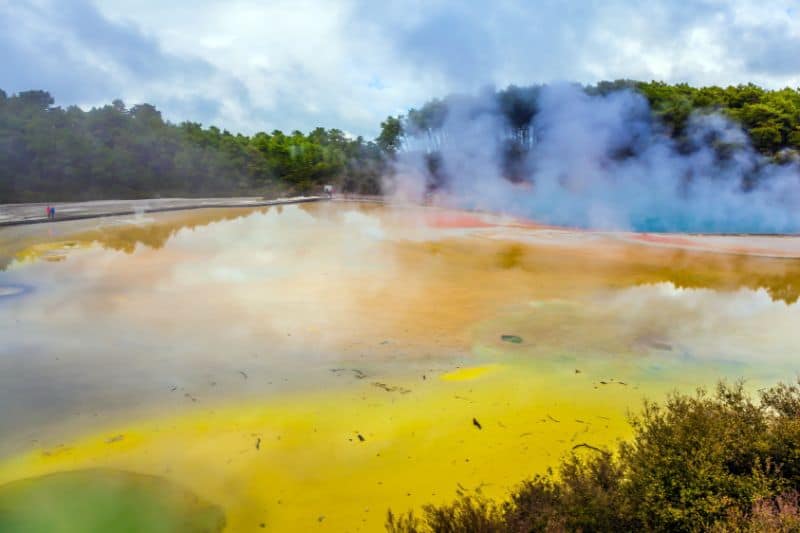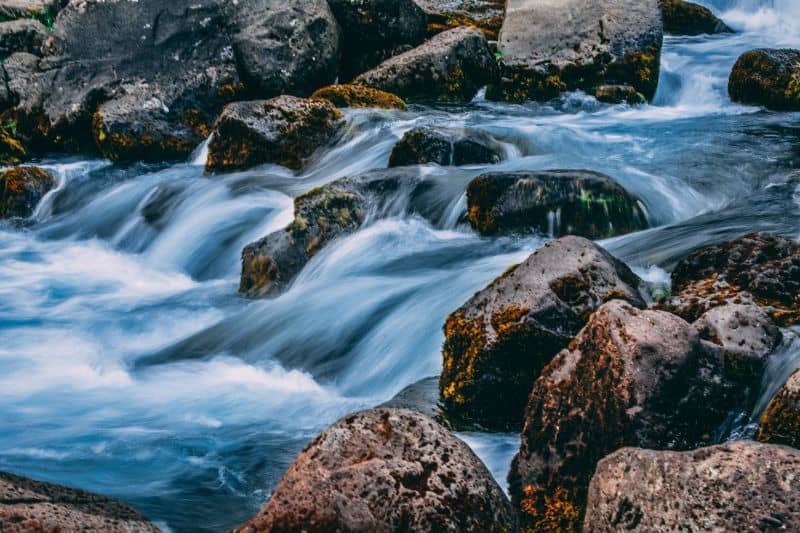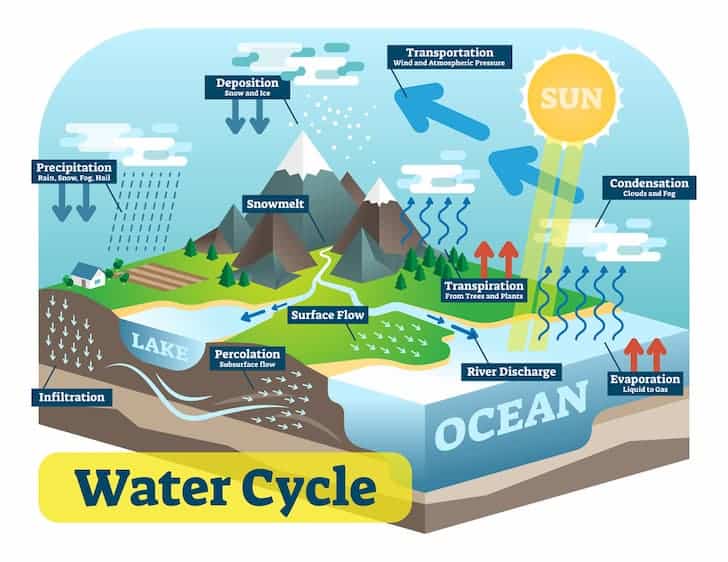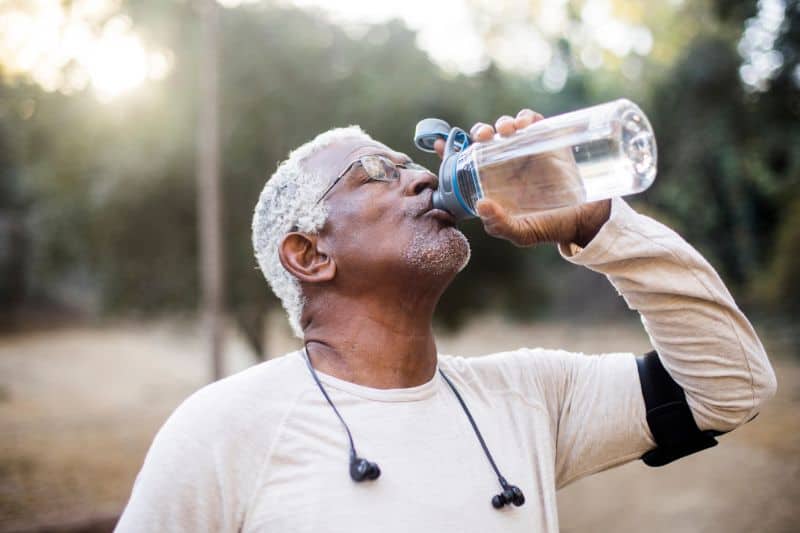The water cycle is the continuous movement of the water all around the Earth. Think of it as a big circle without a starting point.
There are 4 main stages involved in the water cycle:
- Evaporation
- Condensation
- Precipitation, and
- Runoff.
So, how does this cycle work? You see, when the sun shines, the water from the ocean or lake evaporates due to heat from the sun.
When water evaporates, it turns into water vapor and ascends into the atmosphere, accumulating to form a cloud.
When clouds get dense, they drop the water back to Earth in some form of precipitation — it could be as rain, snow, hail, or sleet.
When the water falls back to the Earth, it finds its way to the ground surface into puddles, streams, and rivers. Again, this water will evaporate, accumulate as clouds, fall as precipitation, and the cycles keeps recurring.
All water in the world is subject to what is known as the water cycle, also known as the hydrologic cycle, or the H2O cycle, which is the process by which water moves around the world.
But why exactly is this cycle important?
Well, we’ve got an in-depth answer to this question and many others in that line, so read on!

Different Stages of the Water Cycle
Water goes through three different stages in the water cycle. It can be a liquid (water), a gas (water vapor), or a solid (ice).
These three states are interchangeable and don’t always follow a certain order in the change of form. In other words, water can either evaporate into vapor or condense into ice, and ice can turn into vapor without having to first go through the liquid state.
But usually, the water cycle consists of several steps that see the water go through each of these states.
1. Evaporation

Water is found in lakes, oceans, swamps, and soil, as well as in all living creatures and plants. When heat is applied from the sun, through exertion, or by artificial means, the water molecules become excited and spread out. The loss of density is called ‘evaporation,’ and it sees the water rise into the air, forming clouds of water vapor.
Normally, the evaporation of water occurs when the water hits the boiling point, around one hundred degrees Celsius.
However, in places where the air pressure and humidity are lower, far less heat energy is needed to evaporate the water because less pressure is holding the water molecules together.
The water that evaporates from the oceans is not salty, as the salt is too dense and heavy to rise with the water vapor, which is why it doesn’t exhibit salinity when it rains back into rivers and lakes.
Snow and ice can actually turn into water vapor without first turning into water, a process called ‘sublimation,’ resulting from low humidity and dry winds. This usually occurs at the peaks of mountains or other high-up places, as the lower air pressure means that less energy is needed to sublimate the ice into water vapor.
Some of the highest peaks on the earth, such as Mount Everest, have all of the necessary components for sublimation, namely: strong sunlight, low temperatures, low air pressure, strong wind, and low humidity. If you’ve ever seen dry ice, which has a fog pouting off of it, this is an example of sublimation in action.
When water evaporates off a plant’s leaves, the process is known as ‘evapotranspiration.’ And just so you know, this process produces a large percentage of the water in the atmosphere due to the large areas covered by plants and trees across the planet.
While about ninety percent of the water vapor in the world comes from lakes, oceans, and streams, the remaining ten percent is comprised of the various plant life around the world.
2. Condensation

The water vapor that has risen into the sky cools significantly when it comes into contact with the cooler air found up high. The vapor becomes a cloud, which is pushed around the world by moving air currents and winds.
If the water vapor cools to anything above zero degrees centigrade, it will condense as water. Essentially, the water vapor will start to condense on the surface of tiny particles of dust and dirt that rose with the vapor during evaporation. These tiny droplets will start to fall into one another and merge, producing a larger droplet.
When a droplet is large enough, gravity will pull it down at a rate that exceeds the updraft in the cloud, leading to the droplet falling out of the cloud and onto the ground below. This process is called ‘precipitation’, or – more commonly – rainfall.
If precipitation occurs in conditions that are particularly cold or have very low air pressure, then these water droplets can quite often crystallize and freeze. This causes the water to fall as solid ice, known as hail, or as snow.
If the conditions are between those associated with snow and rain, the droplets will fall into icy cold, half-frozen water, commonly referred to as sleet.
3. Precipitation

The water that has fallen as rain is absorbed into the ground through a process known as ‘infiltration.’ Soil and other porous materials can absorb great deals of water this way, while rocks and other harder substances will only retain a small amount of water.
When the water infiltrates the soil, it will move in all directions until it either seeps into nearby streams or sinks deeper into what is known as ‘groundwater storage.’
This is where the water that does not seep out or evaporate joins up under the ground, saturating the smallest nooks and crannies of rock and soil under the ground. These formations are also known as ‘aquifers’ and explain why sometimes the ground underneath the topsoil is damp or sodden.
When an aquifer becomes too full, it starts to leak onto the surface, forming what is commonly known as a ‘spring.’ These can often be found in porous or brittle rock formations, which can crack following slightly acidic rainfall. Should the water be located near a volcano or any source of natural thermal energy, it will form a hot spring.
4. Runoff

After the water has fallen, the soil has become saturated, or the snow has melted, the water follows gravity and falls down any hills, mountains, or other inclines to form or join rivers.
This process is known as ‘runoff,’ and it is how water comes to rest in lakes and returns to the ocean. The waterfalls are according to the incline of the place from which it is falling, and when several threads of water meet, they form a stream.
The direction in which the water moves is known as ‘streamflow’, central to the concept of the currents within rivers and streams. These streams and rivers will eventually run off to form lakes or rejoin the ocean, depending on their proximity to the ocean.
Due to the amount of water stored in snow or ice, a sudden increase in the heat can lead to flooding due to the water suddenly melting and running off at an alarming rate. This is why flooding can occur so easily during a warm spring following a particularly cold and biting winter.
When more snow falls than evaporates or sublimates, the ice will compact densely to form what is known as ‘ice caps.’ The ice caps and glaciers in the world’s coldest regions are the biggest collections of ice in the world and are slowly starting to shrink as the water in which they sit is becoming warmer.
This happens in a cyclical manner, with no beginning or end. As precipitation happens in one part of the world, evapotranspiration occurs elsewhere. The water cycle never ends, so the oceans stay level; there are always clouds in the sky, and drinkable water doesn’t suddenly just run out.
At a certain juncture, any infiltrated water will eventually be released. Water that has flowed into the ocean will undergo evaporation, and there’s the possibility that a significant portion of the ice caps may melt, releasing water that has been stored for millions of years back into the water cycle. This has the potential for cataclysmic effects, posing significant challenges and consequences for the global environment.

The Importance of the Water Cycle
Some of the benefits of the water cycle include:
1. We Cannot Live without Freshwater
All life is dependent upon water. Water makes up 60 to 70 percent of all living matter, and humans cannot live without drinking water for more than a week. The water cycle is extremely important because it enables water availability for all living organisms and regulates weather patterns on our planet. If water didn’t naturally recycle itself and distribute freshwater all over the earth’s surface, we would run out of clean water, which is essential to life.
Freshwater seems abundant, but it’s in limited supply when accounting for all the water on Earth. Just three percent of the water on our planet is freshwater.
Even more alarming, most of this water, about two percent of the world’s total, is contained in glaciers and ice sheets or stored below ground. The remaining one percent is found in lakes, rivers, and wetland areas or transported through the atmosphere through water vapor, clouds, and precipitation.
2. Purification
Evaporation and infiltration help purify water, benefiting humans, animals, and plants. That’s because when water evaporates, the pollutants and sediments in it are left behind, so what goes into the atmosphere is clean water.
Infiltration, on the other hand, helps purify water as it moves through the ground. As water is absorbed into the soil, pollutants are filtered out, leaving the water in a cleaner state.
Glaciers, ice, and snow can act as stores of freshwater for both humans and other organisms. Even aquatic life needs water purified, as saltwater must be within certain pH and saline ranges.
3. Distribution
Perhaps most importantly, the water cycle distributes water unevenly across the earth’s surface. This is important because if water was not distributed, gravity would push it all into the lowest place, the oceans.
The water cycle continually feeds freshwater to all life on the planet: humans, animals, and plants. Runoff contributes to rivers, other freshwater bodies, and eventually, the ocean, sustaining freshwater and marine life.

4. Water Cycle Sustains Life
Plants wouldn’t grow without precipitation, and therefore, anything consuming the plants wouldn’t survive, and so forth. The water cycle process sustains life and creates the ecosystems around us.
Some organisms are very sensitive to changes in the water cycle. A prolonged drought can destroy a population of plants, or a certain salamander species may require a set amount of soil saturation to avoid desiccation.
5. The Water Cycle Drives the Biogeochemical Cycle
The water cycle patterns and rainfall have major effects on Earth’s ecosystems. Rainfall and surface runoff play important roles in the cycling of various elements, also known as the biogeochemical cycle.
In ecology and Earth science, a biogeochemical cycle or substance turnover or cycling of substances is a pathway by which a chemical substance moves through biotic (biosphere) and abiotic (lithosphere, atmosphere, and hydrosphere) compartments of Earth.
These include calcium, carbon, hydrogen, mercury, nitrogen, oxygen, phosphorus, selenium, and sulfur, molecular cycles for water and silica. In particular, surface runoff helps move elements from terrestrial, land-based, to aquatic ecosystems.
6. Effects on Climate
The water cycle is powered by solar energy, and 86% of the global evaporation occurs from the oceans, reducing their temperature by evaporative cooling.
Without the cooling, the effect of evaporation on the greenhouse effect would lead to a much higher surface temperature of 67 °C (153 °F) and a warmer planet.
References:





